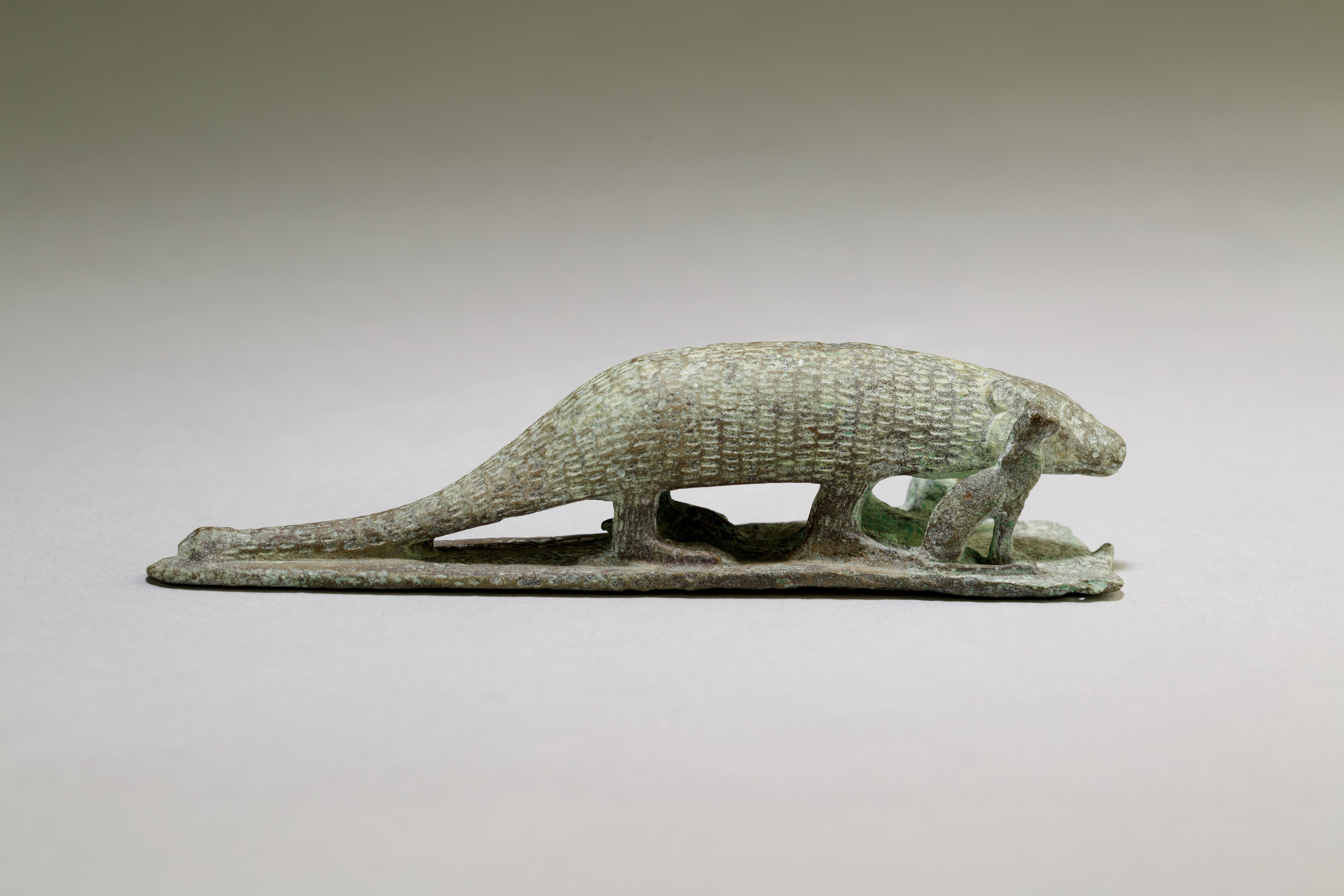Ichneumon on a base with small cats, inscribed beneath base with the name of Padineith son of Isekhebi
Late Period or Ptolemaic Period
Not on view
The ichneumon is a rodent, similar to a mongoose, that was associated with the gods Horus of Letopolis and Atum, and during the Late Period became associated with the goddess Wadjet through her cult at Buto being linked mythologically with that of Horus of Letopolis.
Sometimes confused with the shrew mouse, which was also dedicated as a statuette, the ichneumon has a shorter snout, thick body, and smaller oval ears; its legs are straight and its tail droops down to touch the base below. On this example, small incised marks indicate the ichneumon’s fur. Two cats sit on either side of the ichneumon on a thin, long base, which is inscribed on its underside: "Wadjet gives life to Pedineith, son of Isemkebi."
Similar ichneumons frequently adorn boxes that would have held small animal mummies, and could be dedicated to either Horus or Atum, but are also frequently found together with other animal statuettes related more broadly to solar cult, such as lizards, falcons, and shrew mice. The reason for the small cats on this example is not obvious; it may refer to an association of Wadjet and Bastet.
Due to rights restrictions, this image cannot be enlarged, viewed at full screen, or downloaded.
This artwork is meant to be viewed from right to left. Scroll left to view more.


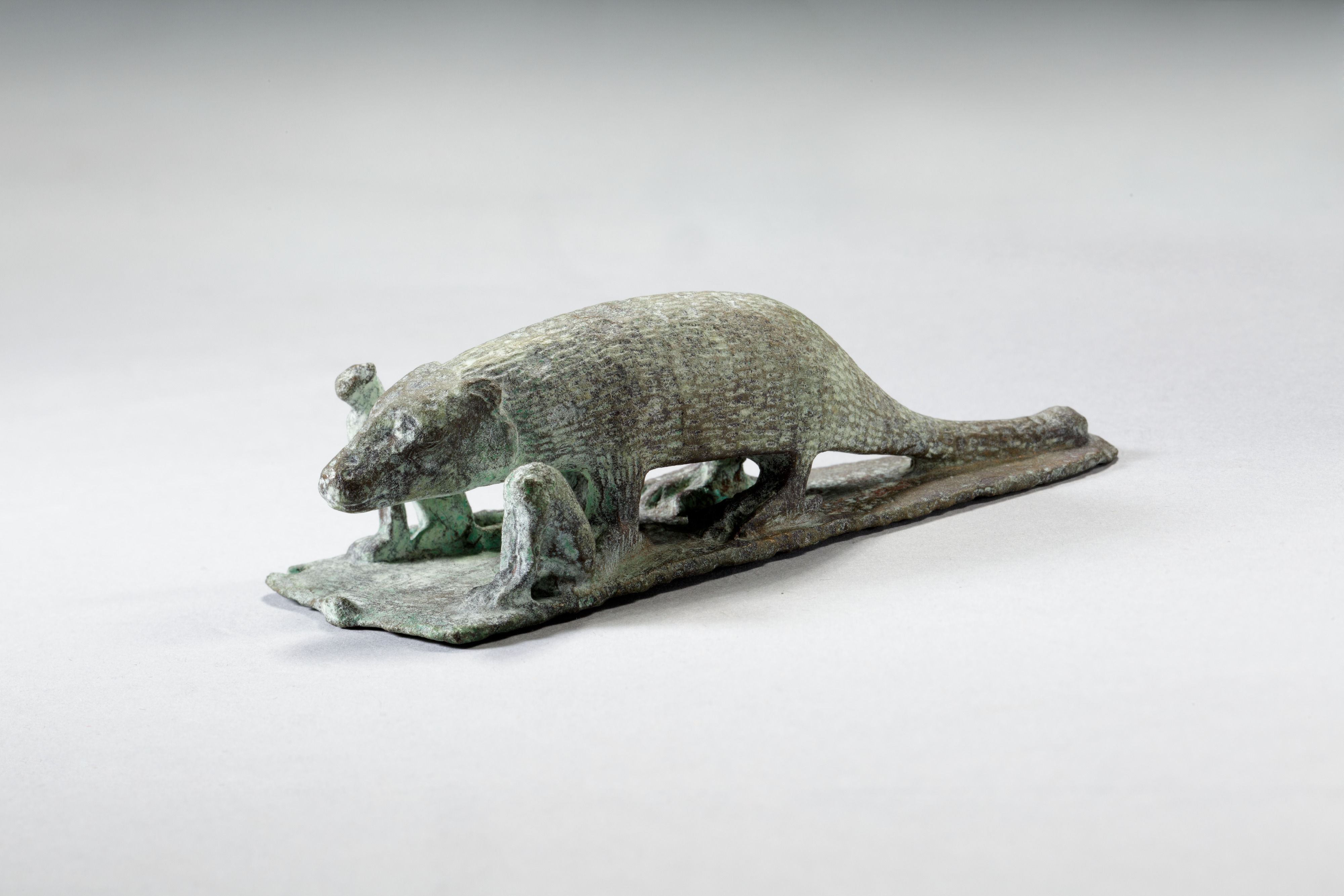
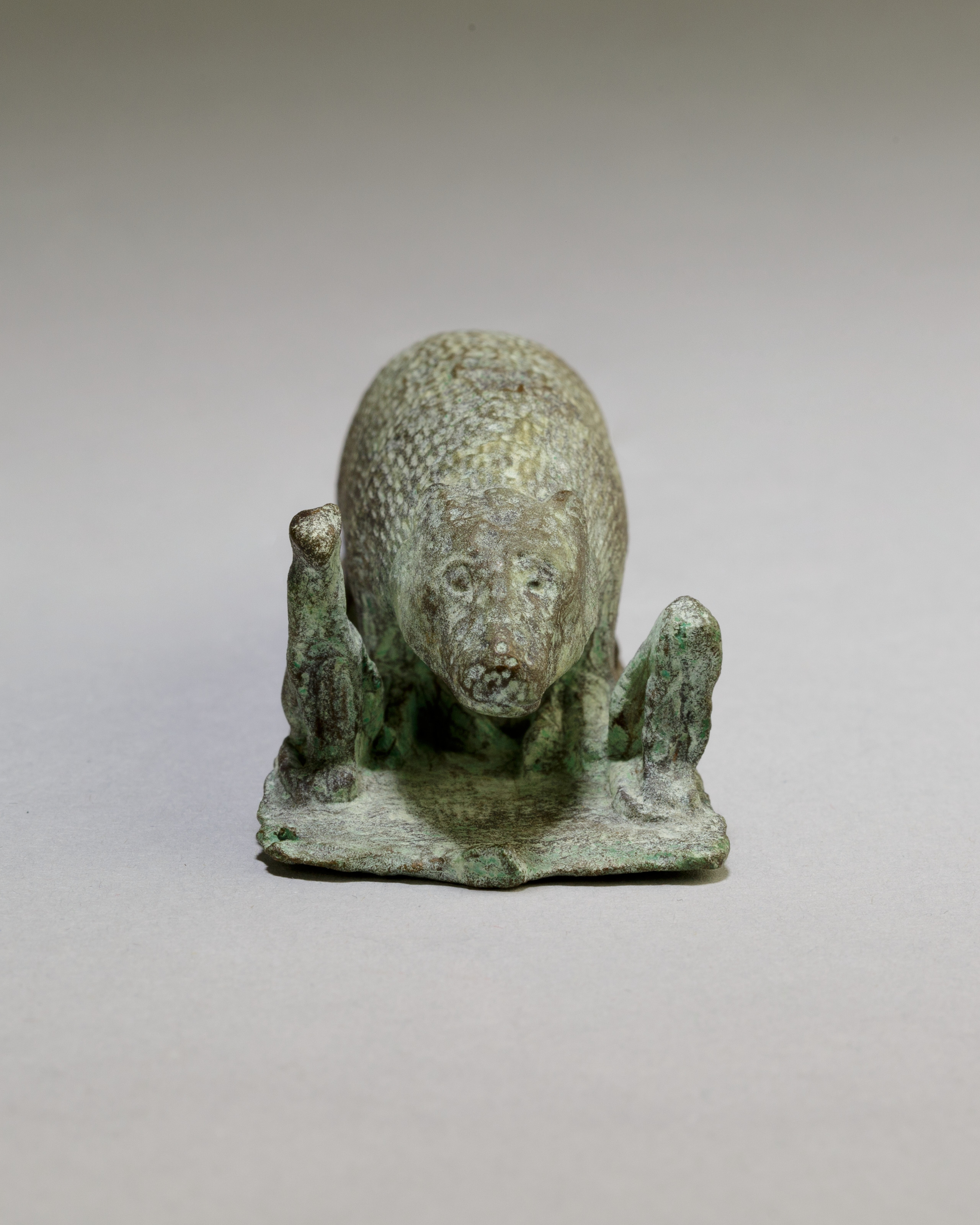
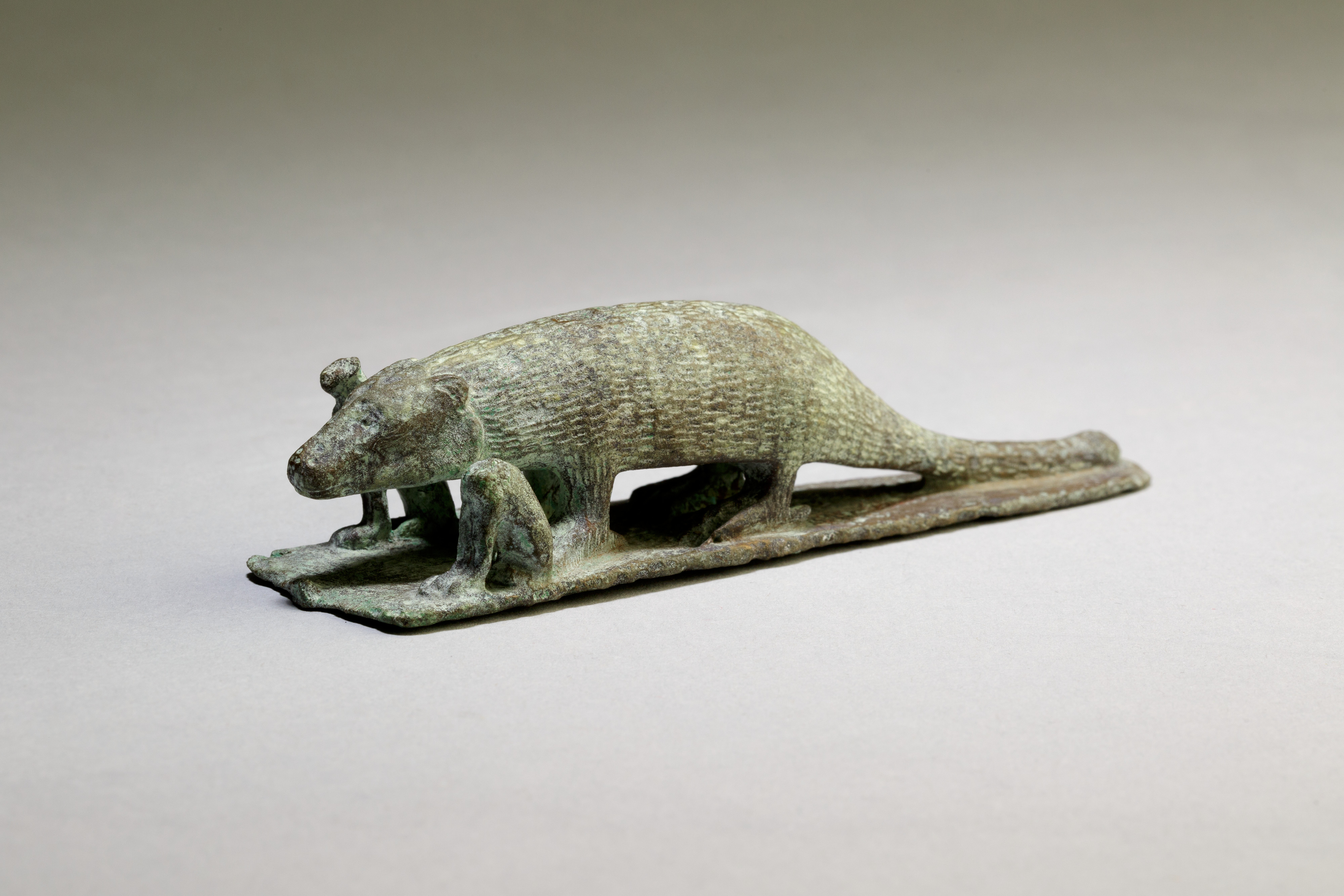

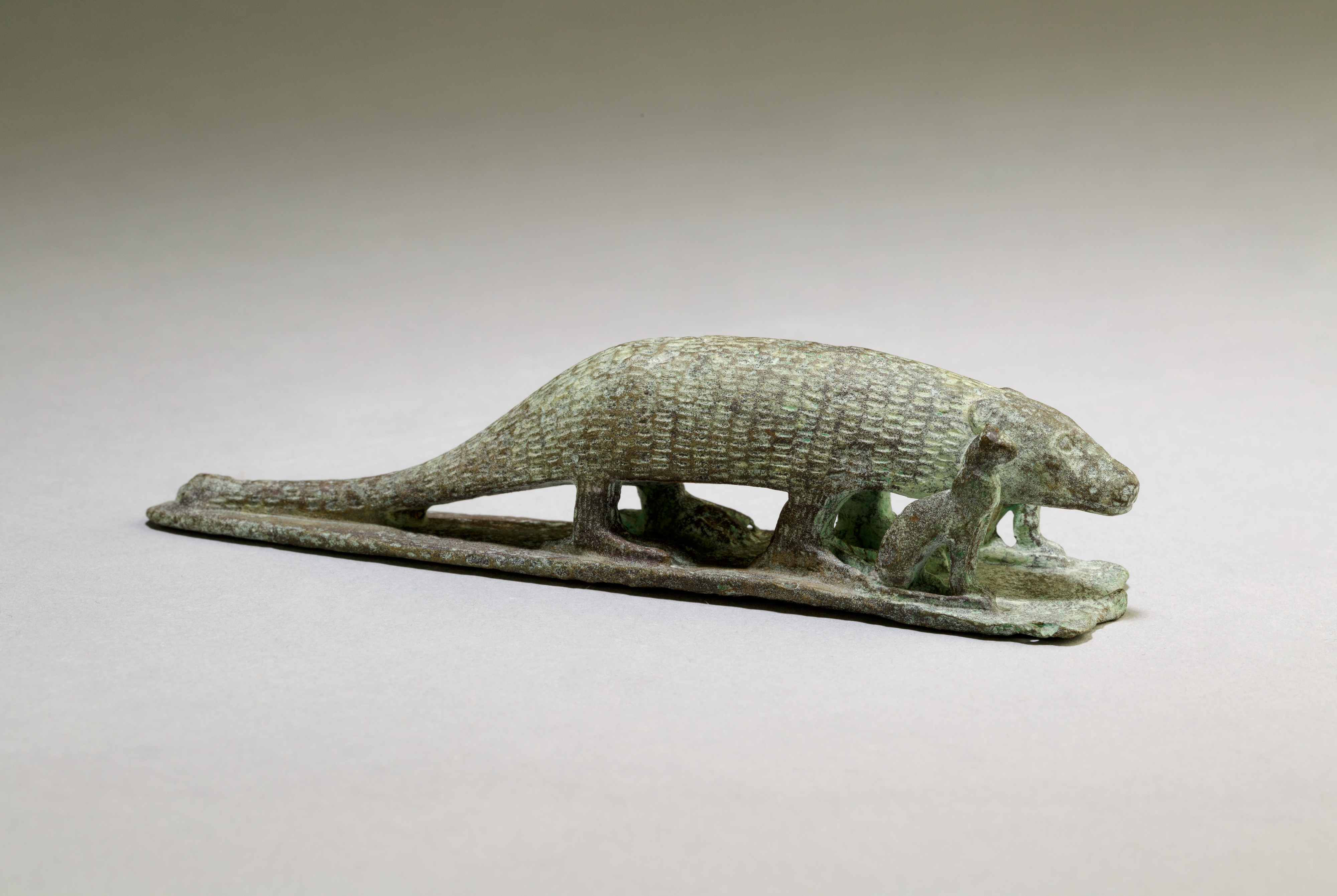
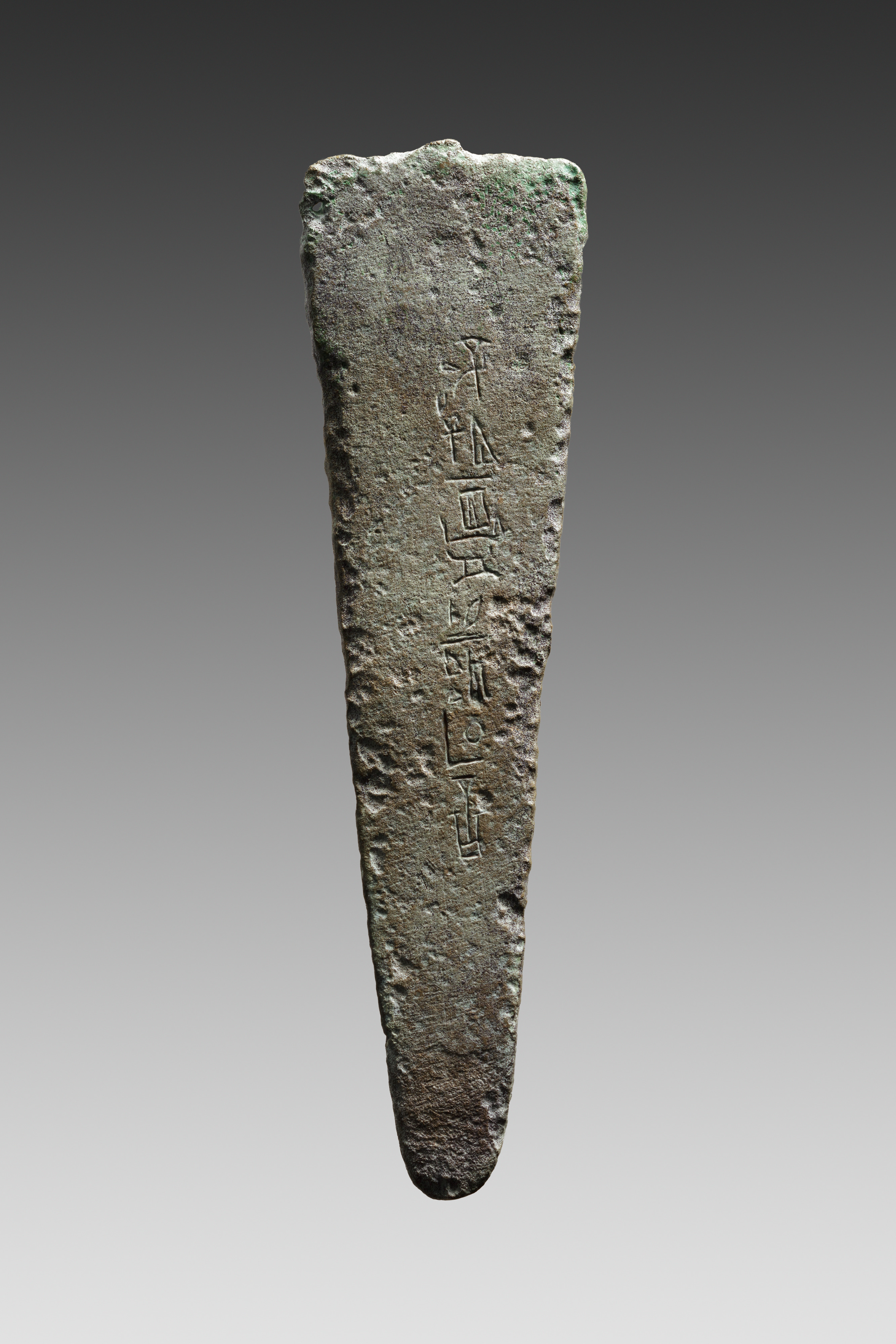
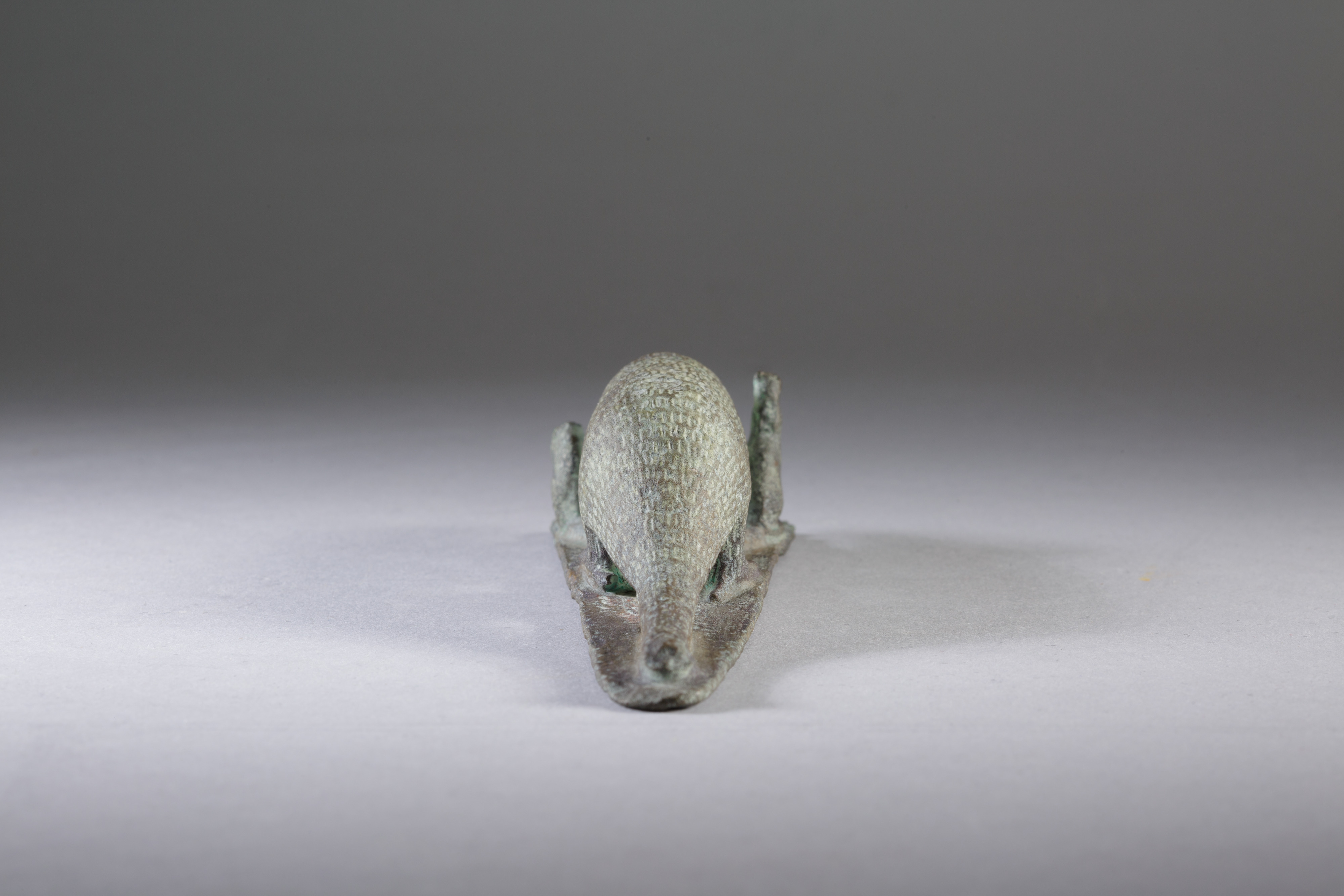
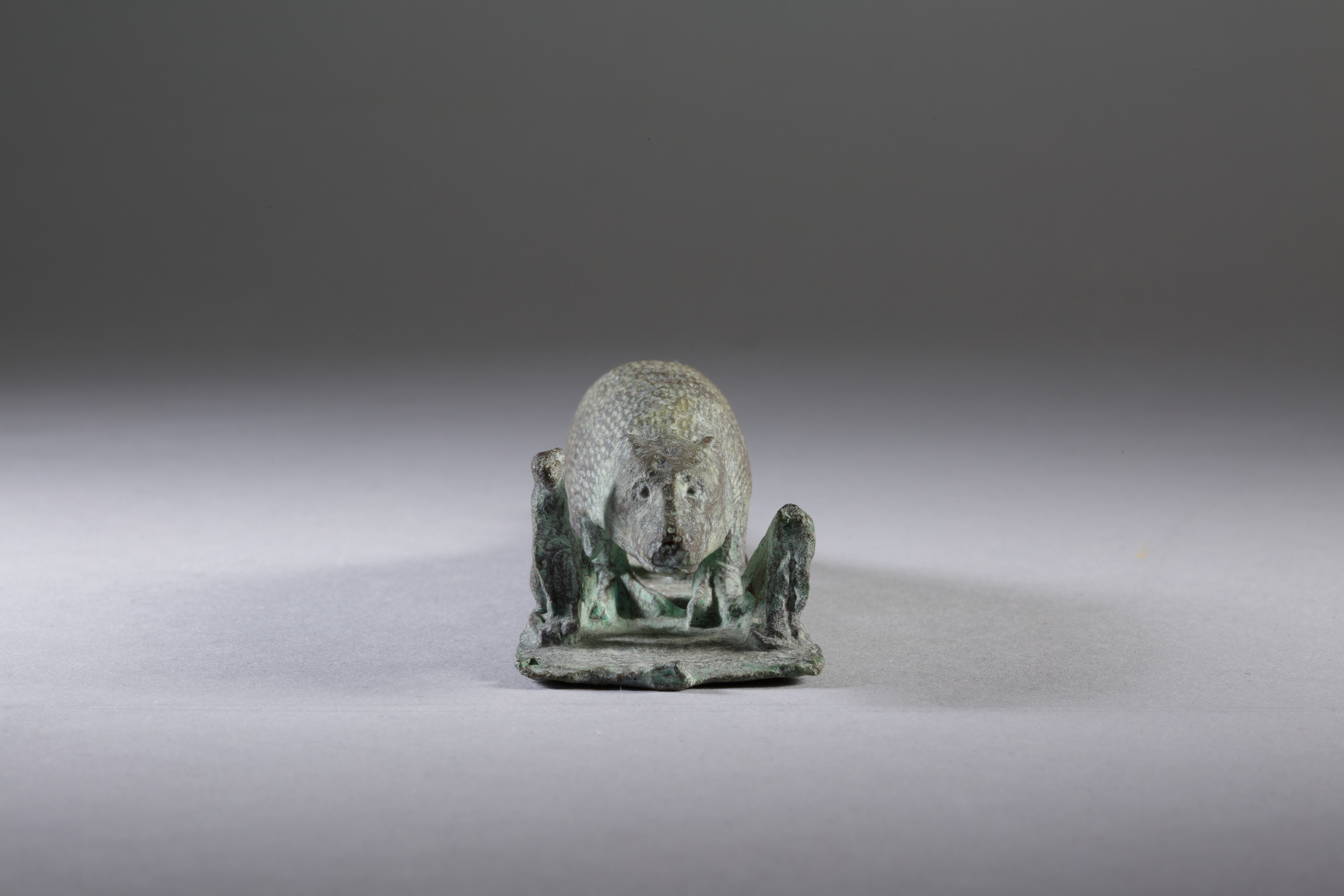
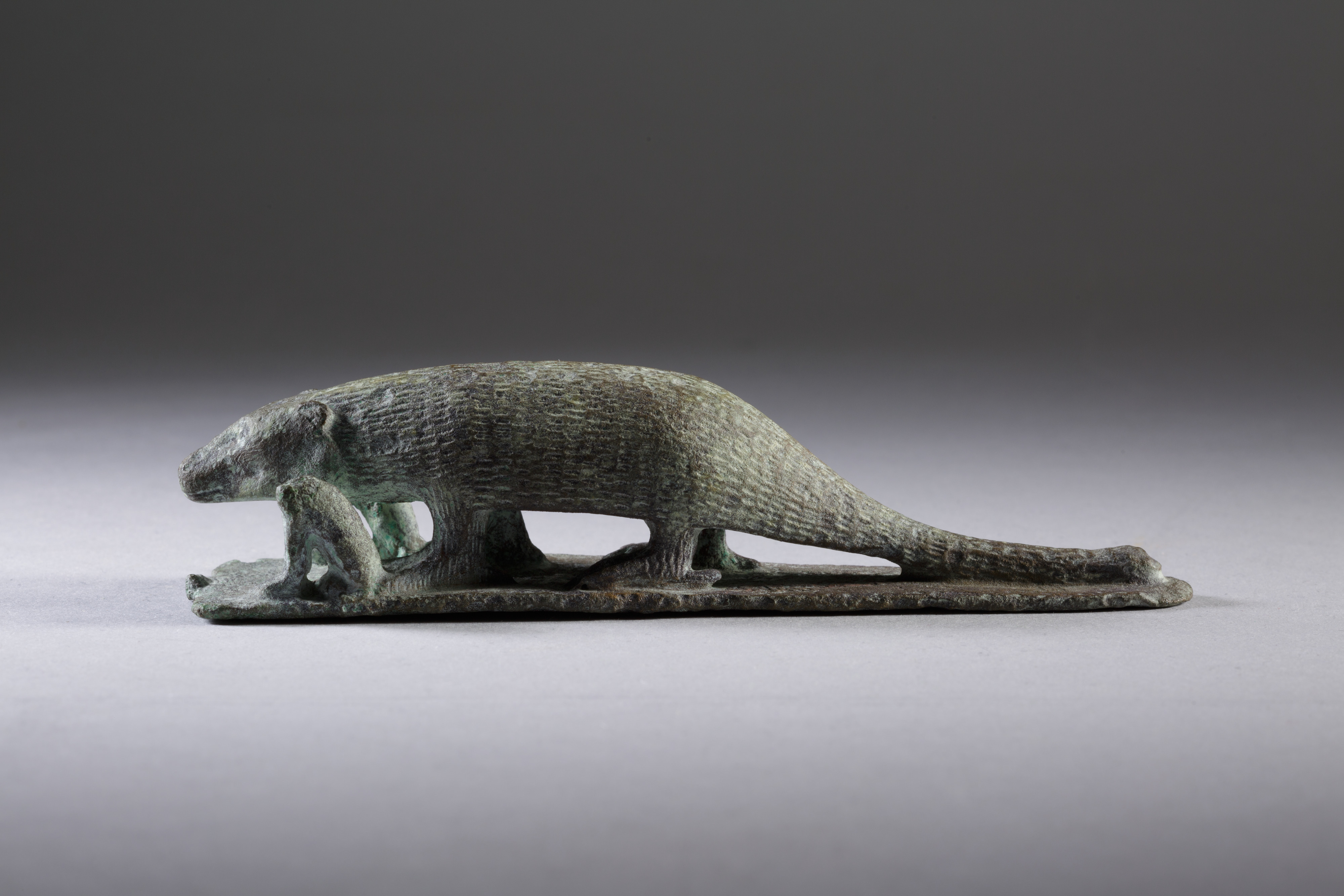
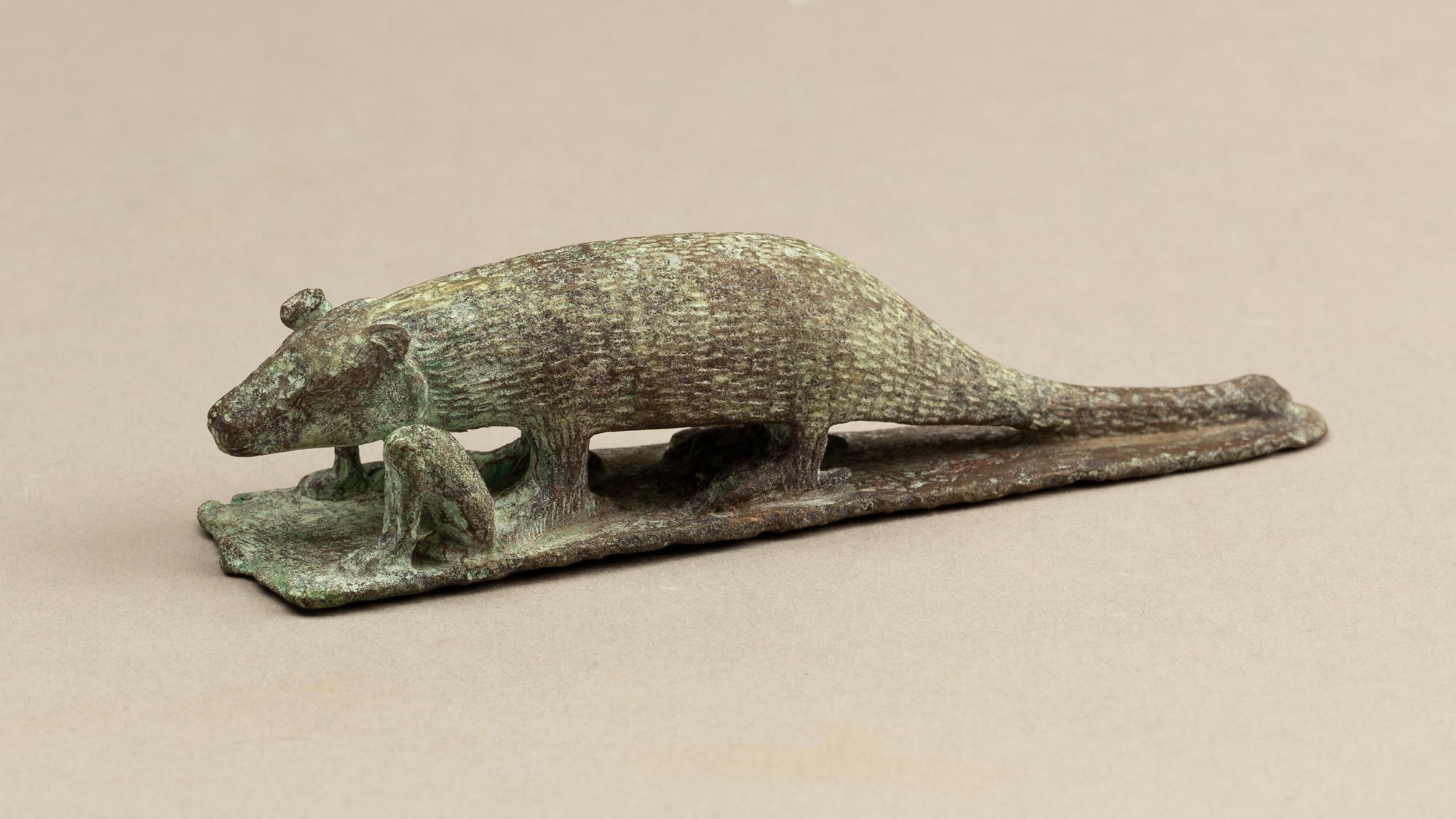
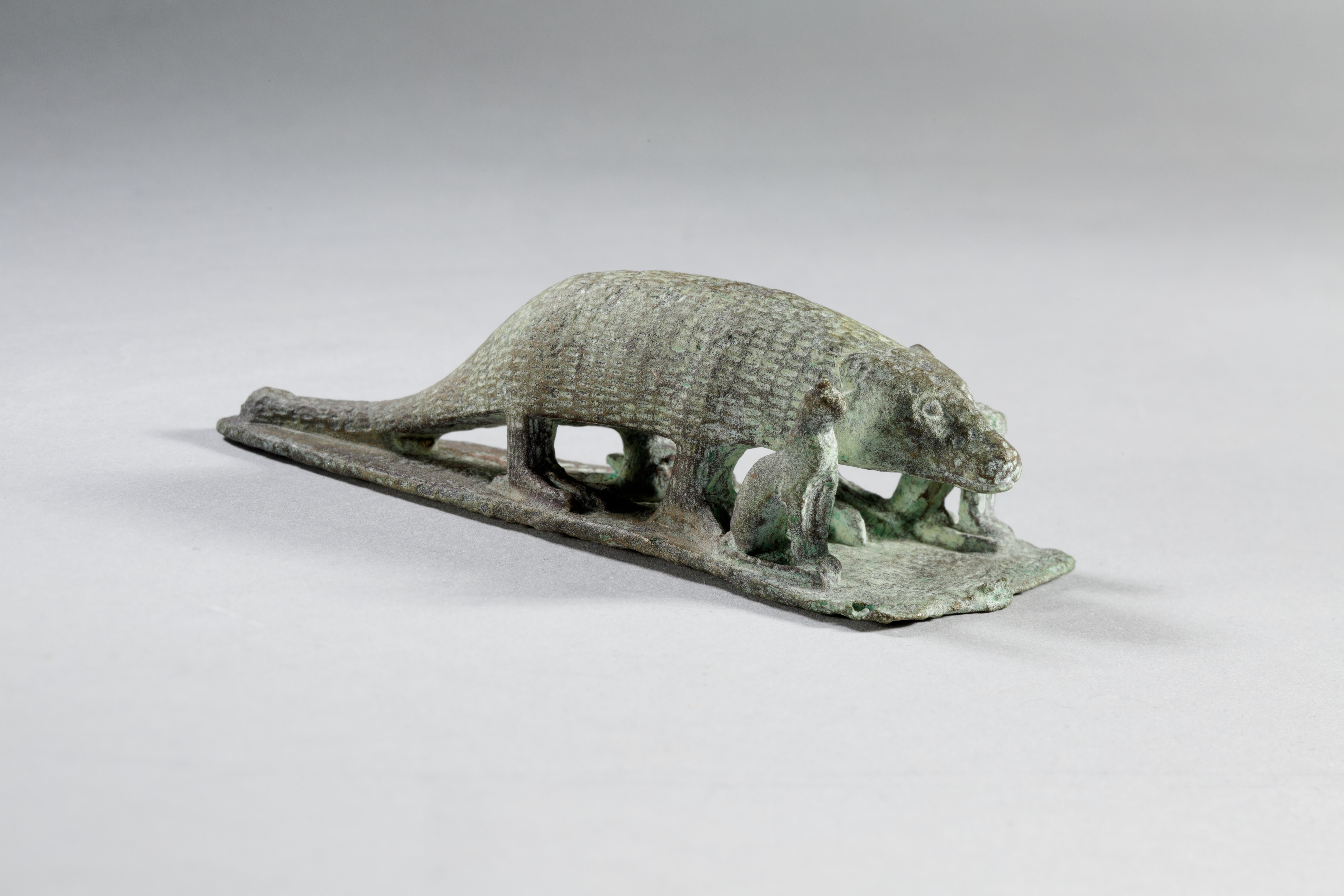
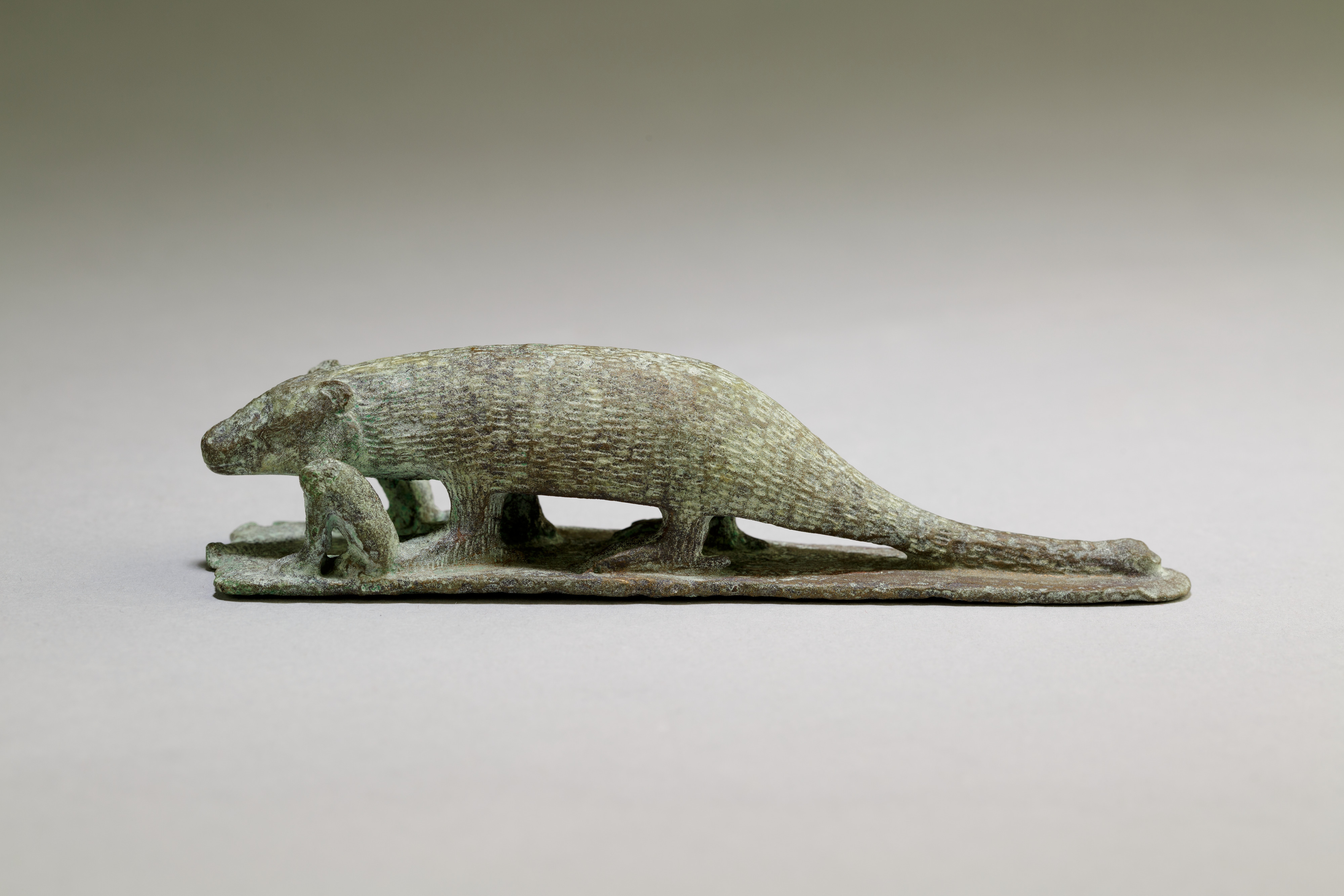
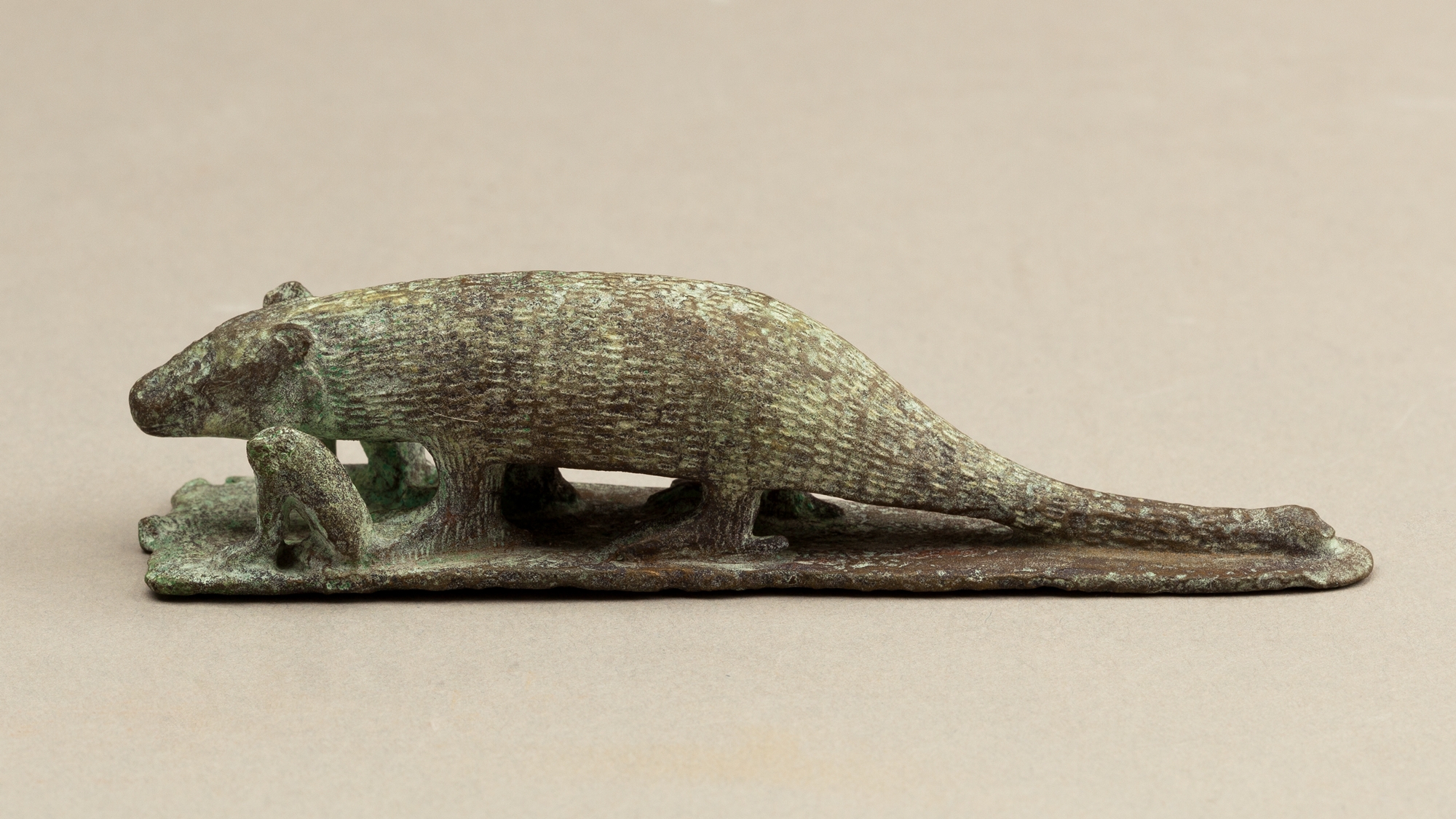

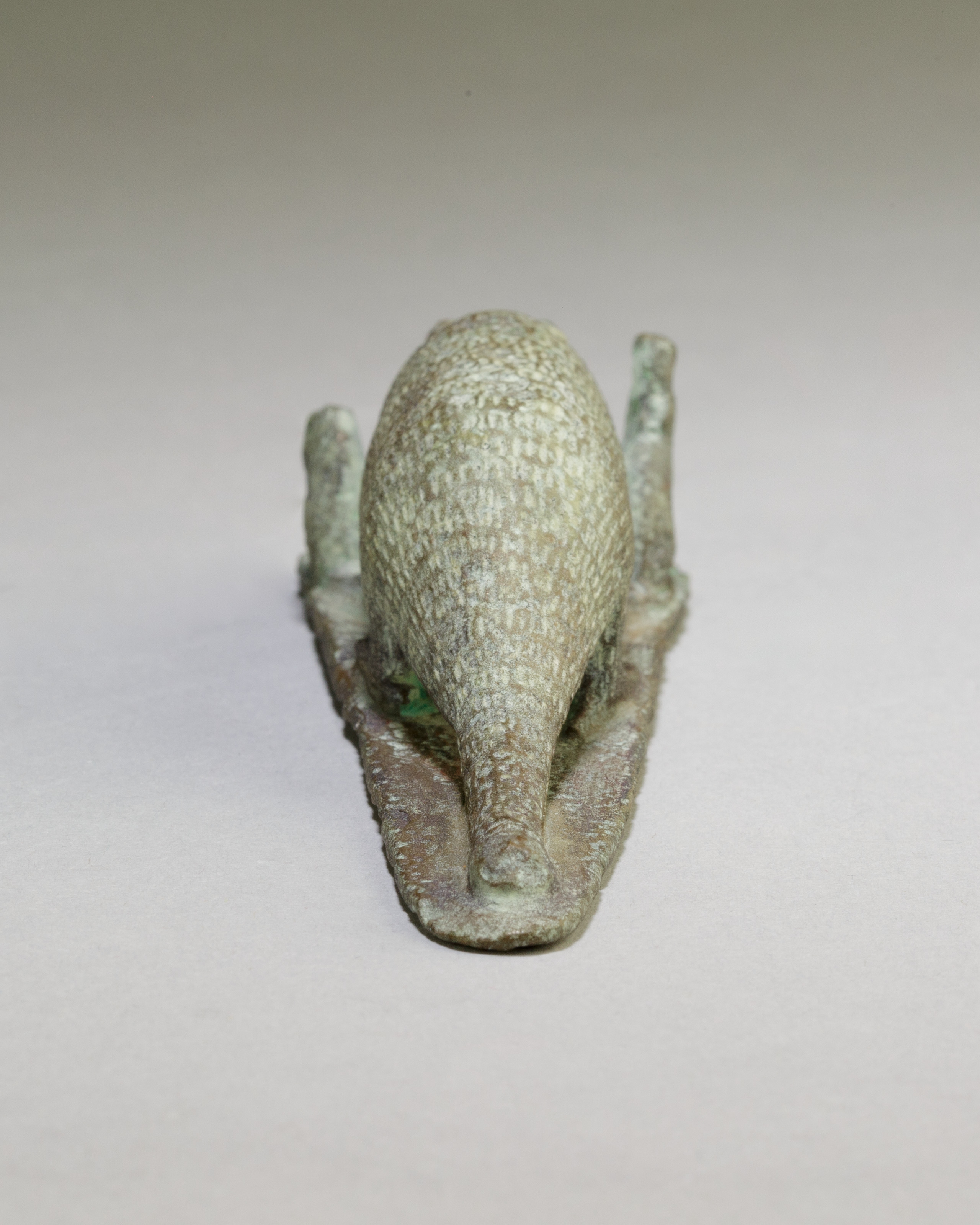
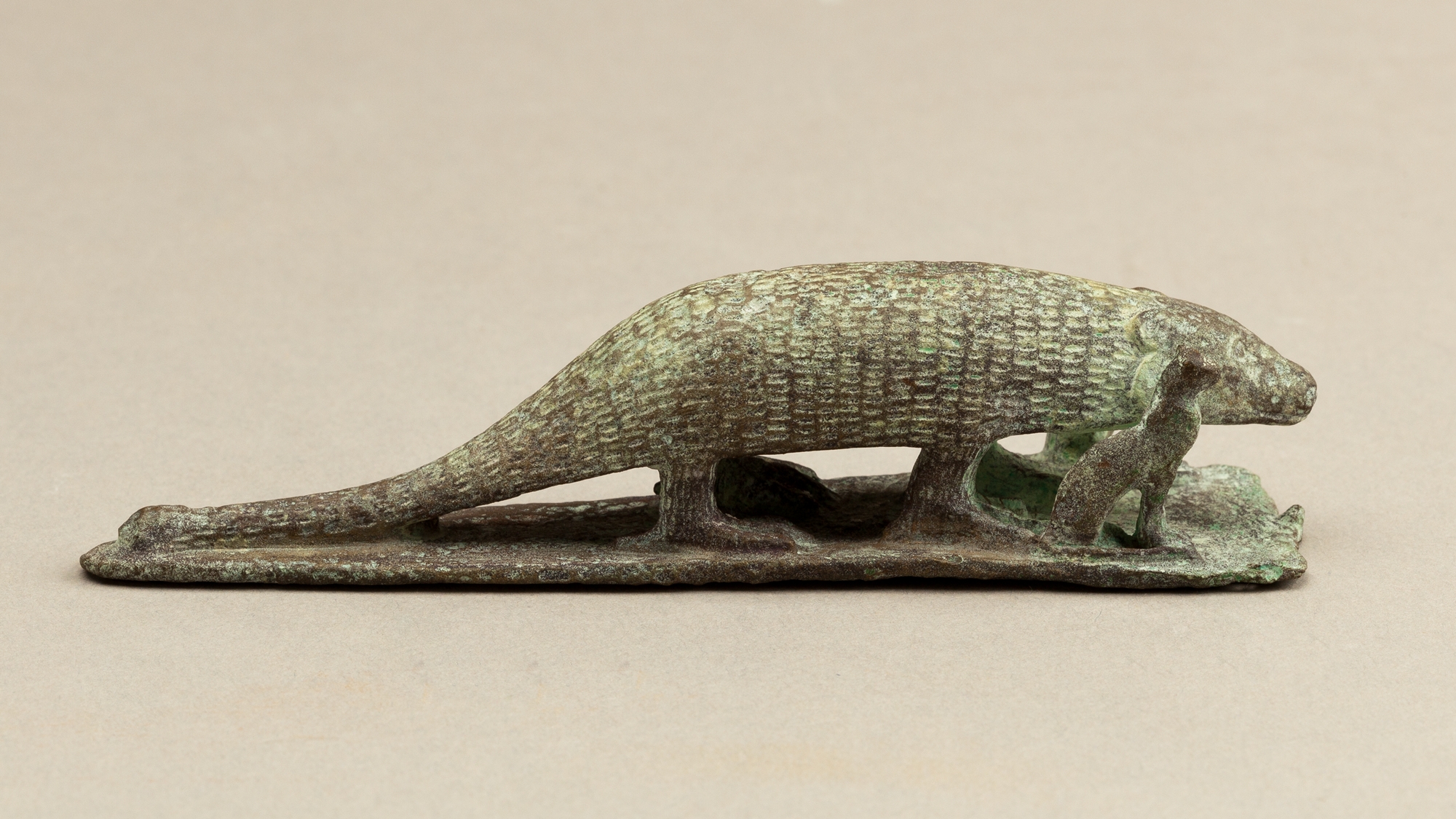
.JPG)
